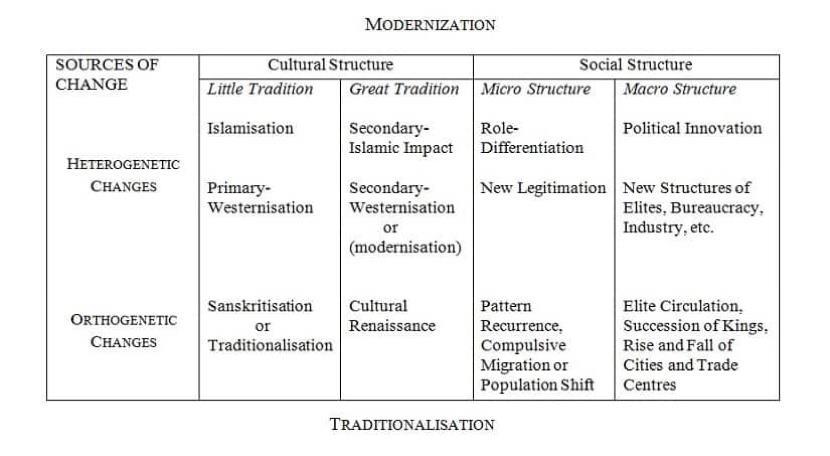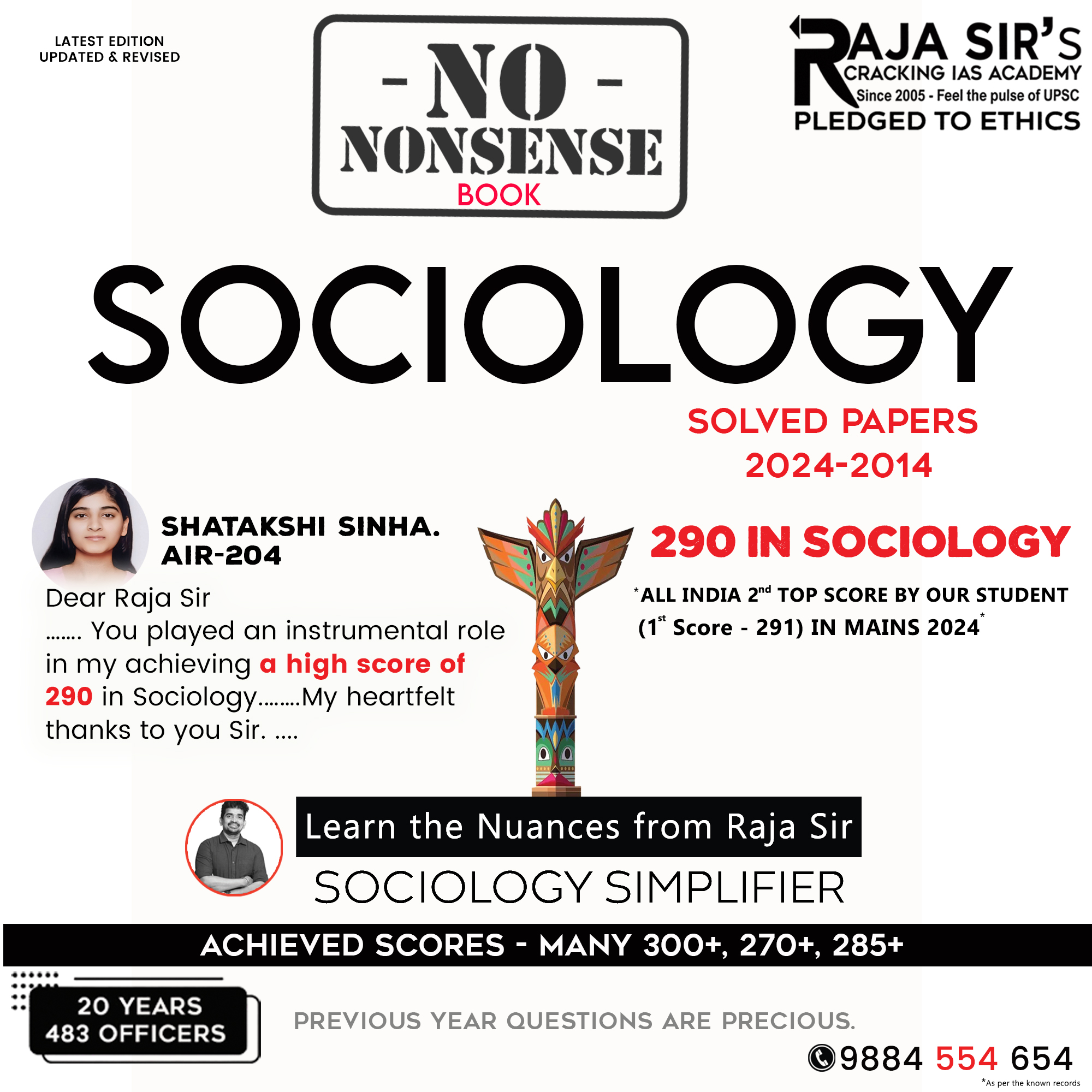- Home
- Prelims
- Mains
- Current Affairs
- Study Materials
- Test Series
How did Yogendra Singh conceptualize social change by distinguishing between exogenous and endogenous sources?. [Sociology - Mains Daily Answer writing Practice (15 Marks) - Paper 2]

Yogendra Singh on Modernisation in India It is a form of cultural response, involving attributes which are basically universalistic and evolutionary; they help pan humanity; trans-ethnic and non-ideological. Indian Modernisation is not linear like West and involved dialectical relationship with tradition. He explains limitation of concepts like Sanskritisation, Westernisation, Little and Great Tradition in his book Modernisation of Indian Tradition. As they explain only cultural dynamics and not structural ones. Whereas his idea is a combination of both.
He locates source of social change like endogenous/orthogenetic as in Sanskritisation, cultural renaissance etc due to migration, population change, elite circulation, royal successions etc and heterogenetic/exogenous as in case of Islamic influence in medieval period and Western influence in modern period.
 Endogenous (Orthogenetic) Sources
Endogenous (Orthogenetic) Sources
These are internal forces of change that emerge from within Indian society and its traditions.
- Sanskritization: Lower castes adopt practices of higher castes to gain social mobility.
- Bhakti and Sufi Movements: Reformist religious movements that challenged orthodoxy and emphasized personal devotion.
- Cultural Renaissance: Revivals of indigenous art, literature, and philosophy.
- Demographic Shifts: Migration, urbanization, and changes in family structure.
- Adaptive Traditions: Institutions like caste and joint family evolve without breaking down.
Y.Singh emphasized that these changes are reformist, not revolutionary—they modify existing structures rather than dismantling them.
Exogenous (Heterogenetic) Sources
These are external influences that impact Indian society from outside.
- Islamic Influence: Introduced new cultural, architectural, and social norms during medieval times.
- Westernization: British colonial rule brought legal, educational, and administrative reforms.
- Globalization: Contemporary forces like media, technology, and international trade reshape values and lifestyles.
- Modern Institutions: Bureaucracy, judiciary, and capitalist economy emerged from Western contact.
Y.Singh argued that exogenous sources often lead to structural changes, such as shifts in governance, economy, and education.
Y.Singh’s Integrated View
He believed that both sources interact—tradition adapts to modernity, and modernity is filtered through cultural lenses. This leads to what he called “neo-traditionalism”, where old institutions persist but in transformed ways.










 Latest News
Latest News

 General Studies
General Studies